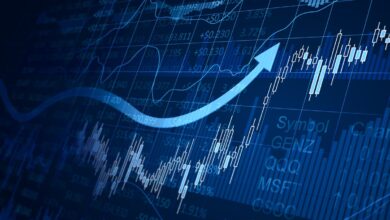Fermat’s Last Theorem and Artificial Intelligence: A Confluence of Math and Technology | by Frank Morales Aguilera | May, 2024

Boeing Associate Technical Fellow /Engineer /Scientist /Inventor /Cloud Solution Architect /Software Developer /@ Boeing Global Services
At first glance, Fermat’s Last Theorem and Artificial Intelligence (AI) may seem like two disparate fields. However, they share a common thread — the relentless pursuit of knowledge and the power of human intellect. This essay explores the intriguing intersection of these two domains.
Fermat’s Last Theorem, named after the French mathematician Pierre de Fermat, is a statement in number theory that has intrigued mathematicians for centuries[1]. The theorem states that no three positive integers a, b, and c satisfy the equation
a^n + b^n = c^n
for any integer value of n greater than 2[1].
Fermat famously scribbled in the margin of his copy of Arithmetica that he had a proof for this theorem, but it was too large to fit[2]. This claim sparked a quest among mathematicians to find the elusive proof, turning Fermat’s Last Theorem into one of the most famous unsolved problems in mathematics[1].
The English mathematician Andrew Wiles finally proved the theorem in 1995, more than 350 years after Fermat’s original conjecture[1]. Wiles’ proof was a monumental achievement in mathematics, demonstrating the power of human intellect and perseverance[1].
Artificial Intelligence, on the other hand, represents a technological revolution. AI systems, like ChatGPT developed by OpenAI, can generate human-like text based on context and past conversations[3]. These systems can engage in conversations, automate tasks, and even write stories or code[4].
AI can transform various sectors, from healthcare to education, entertainment to transportation. It can assist in complex decision-making processes, predict trends, and personalize user experiences4.
The intersection of Fermat’s Last Theorem and AI lies in the realm of problem-solving. Just as Wiles used innovative mathematical techniques to solve Fermat’s Last Theorem, AI uses complex algorithms and vast amounts of data to solve intricate problems[3].
Moreover, the development of AI has been greatly influenced by mathematical theories. Concepts from number theory, calculus, statistics, and linear algebra form the backbone of many AI algorithms. In this sense, the resolution of Fermat’s Last Theorem and the development of AI both represent significant milestones in human intellectual achievement.
Several famous unsolved mathematical problems continue to challenge mathematicians worldwide. Here are a few of them:
- The Twin Prime Conjecture: This conjecture posits that infinitely many pairs of prime numbers differ by two[1,2]. [4,5]
- The Goldbach Conjecture: This conjecture proposes that every even integer greater than two can be expressed as the sum of two prime numbers[4,6].
- The Collatz Conjecture: This conjecture involves a sequence defined as follows: start with any positive integer n. Then, each subsequent term is obtained from the previous term as follows: if the last term is even, the next term is one-half of the previous term. If the previous term is odd, the following term is three times the previous term plus 1. The conjecture is that no matter what value of n, the sequence will always reach 1[4,6].
- The Riemann Hypothesis: This is one of the most famous unsolved problems in mathematics. It involves the distribution of prime numbers and has implications for many areas of mathematics[7,8].
- The Birch and Swinnerton-Dyer Conjecture: This conjecture involves elliptic curves and has essential implications for number theory[7,8].
- The Navier–Stokes existence and smoothness problem involves the equations describing the flow of incompressible fluids. The challenge is to make progress toward a mathematical theory that will give complete solutions to the Navier-Stokes equations in three dimensions[7,8].
- The Yang-Mills existence and mass gap: This problem involves quantum mechanics and has implications for the standard model of particle physics[7,8].
- The Hodge Conjecture: This conjecture involves algebraic cycles and has implications for the field of algebraic geometry[7,8].
- The P vs NP Problem: This question in computer science involves computational complexity[7,8].
These problems represent some of the most profound questions in mathematics and continue to inspire new research and discovery.
Case study
I developed a notebook[9] thoroughly tested in Google Colab to demonstrate how to check the solutions of Fermat’s Last Theorem.
In conclusion, Fermat’s Last Theorem and AI embody the spirit of human curiosity and the desire to unravel the mysteries of the universe. While Fermat’s Last Theorem represents a pinnacle of mathematical thought, AI symbolizes the dawn of a new technological era. Together, they illustrate the remarkable capabilities of the human mind and the limitless possibilities that lie ahead.
1.- Fermat’s Last Theorem — Wikipedia
2.- Fermat’s last theorem | Definition, Example, & Facts | Britannica
3.- ChatGPT
4.- 6 Deceptively Simple Maths Problems That No One Can Solve : ScienceAlert
5.- Millennium Prize Problems in Mathematics | Math Nirvana
7.- List of unsolved problems in mathematics — Wikipedia
8.- Millennium Prize Problems — Wikipedia
9.- https://github.com/frank-morales2020/MLxDL/blob/main/fermat.ipynb



